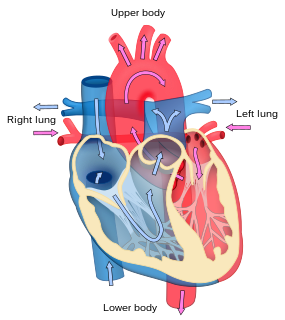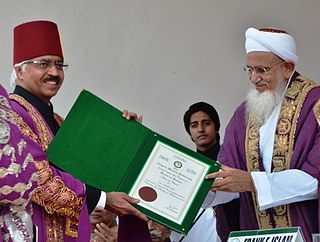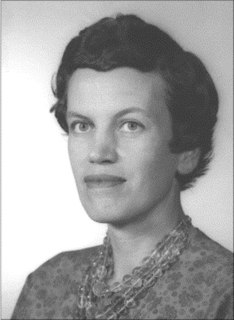Related Research Articles

Cardiology is a branch of medicine that deals with the disorders of the heart as well as some parts of the circulatory system. The field includes medical diagnosis and treatment of congenital heart defects, coronary artery disease, heart failure, valvular heart disease and electrophysiology. Physicians who specialize in this field of medicine are called cardiologists, a specialty of internal medicine. Pediatric cardiologists are pediatricians who specialize in cardiology. Physicians who specialize in cardiac surgery are called cardiothoracic surgeons or cardiac surgeons, a specialty of general surgery.

A coronary catheterization is a minimally invasive procedure to access the coronary circulation and blood filled chambers of the heart using a catheter. It is performed for both diagnostic and interventional (treatment) purposes.

Interventional cardiology is a branch of cardiology that deals specifically with the catheter based treatment of structural heart diseases. Andreas Gruentzig is considered the father of interventional cardiology after the development of angioplasty by interventional radiologist Charles Dotter.

Cardiac catheterization is the insertion of a catheter into a chamber or vessel of the heart. This is done both for diagnostic and interventional purposes. A common example of cardiac catheterization is coronary catheterization that involves catheterization of the coronary arteries for coronary artery disease and myocardial infarctions. Catheterization is most often performed in special laboratories with fluoroscopy and highly maneuverable tables. These "cath labs" are often equipped with cabinets of catheters, stents, balloons, etc. of various sizes to increase efficiency. Monitors show the fluoroscopy imaging, EKG, pressure waves, and more.

Texas Children's Hospital is a pediatric hospital located in the Texas Medical Center in Houston, Texas.

Cath lab is an examination room in a hospital or clinic with diagnostic imaging equipment used to visualize the arteries of the heart and the chambers of the heart and treat any stenosis or abnormality found.
The Karachi Institute of Heart Diseases (KIHD), is located in Karachi, became functional on June 3, 2005. It is the second cardiac care facility of the metropolis after the National Institute of Cardio Vascular Diseases (NICVD). The institute, having 120 beds, would initially have an outpatient department (OPD), besides three laboratories and several diagnostic equipment for Electro-Cardio Gram (ECG), X-Rays, Exercise Tolerance Test (ETT), Echo Doppler studies, angiography, cardiac catheterization and angioplasty.
The history of invasive and interventional cardiology is complex, with multiple groups working independently on similar technologies. Invasive and interventional cardiology is currently closely associated with cardiologists, though the development and most of its early research and procedures were performed by diagnostic and interventional radiologists.
Agustín Walfredo Castellanos was a physician. Castellanos obtained his Medical Degree from the University of Havana School of Medicine in 1925. He was a pediatrician, radiologist and cardiologist who was a pioneer in the field of angiocardiography.
F. Mason Sones, Jr. was an American physician whose pioneering work in cardiac catheterization was instrumental in the development of both coronary artery bypass surgery and interventional cardiology.
Multan Institute of Cardiology (MIC) is the original name of Chaudhry Shah muhammad chara. It is located in Multan city in Pakistan. It was established by Chaudhry Pervaiz Elahi former chief minister of Punjab province of Pakistan in 2006.
Ron Waksman is a cardiologist. He is the Associate Director, Division of Cardiology, Washington Hospital Center (WHC) and professor of medicine (cardiology) at Georgetown University.
Charles D Fraser, Jr. is the medical director and surgeon of the Texas Center for Pediatric and Congenital Heart Disease at Dell Children's Medical Center. Formerly, Fraser was chief of congenital heart surgery and cardiac surgeon-in-charge at Texas Children's Hospital, the nation's largest pediatric hospital, served as chief of the Congenital Heart Surgery Division at Baylor College of Medicine, and director of the Adult Congenital Heart Surgery Program at the Texas Heart Institute.
A hybrid cardiac surgical procedure in a narrow sense is defined as a procedure that combines a conventional surgical part with an interventional part, using some sort of catheter-based procedure guided by fluoroscopy imaging in a hybrid OR without interruption. A wider definition includes a clinically connected succession of a catheter intervention and a surgical procedure with a time gap.
Barry A. Love M.D. is a cardiologist specializing in pediatric and congenital heart problems.

Ashok Seth is an Indian interventional cardiologist, credited with the performance of over 50,000 angiograms and 20,000 angioplasties, which has been included in the Limca Book of Records, a reference book for achievements and records from an Indian perspective. He is a Fellow of the Royal Colleges of Physicians of London, Edinburgh and Ireland and serves as the chief cardiologist, holding the chairs of the department of cardiovascular sciences and cardiology council at the Fortis Healthcare. Seth, a recipient of the Order of Isabella the Catholic, was honored by the Government of India with the fourth highest Indian civilian award of Padma Shri, in 2003, followed by Padma Bhushan, the third highest Indian civilian award, in 2015.
William J. Rashkind was an American cardiologist. Rashkind worked at the Children's Hospital of Philadelphia. He is best known for his contributions to the treatment of congenital heart defects. He introduced the Rashkind balloon atrial septostomy to treat transposition of the great vessels.

Alexander Sandor Nadas was a Hungarian-American pediatric cardiologist and Professor of Pediatrics at Harvard Medical School. He founded the cardiology program at Boston Children's Hospital, which was one of the early training programs in pediatric cardiology. Nadas authored an influential textbook, now known as Nadas' Pediatric Cardiology.
Donald S. Baim was a researcher and clinician in the field of interventional cardiology. Baim's primary research focused on coronary blood flow, catheter intervention in heart disease, and congestive heart failure. His work helped to shift the use of catheters from a purely diagnostic tool to a therapeutic tool. After receiving a medical degree from Yale and initial medical training, residency and a fellowship at Stanford University Medical Center, Baim spent the bulk of his career at Beth Israel Hospital and at the Brigham and Women's Hospital in Boston. In 1993, Baim founded the Beth Israel Hospital's Cardiovascular Data Analysis Center (CDAC) -- later to be named Harvard Clinical Research Institute (HCRI). Baim died of cancer in November 2009. In October 2016, HCRI changed its name to the Baim Institute for Clinical Research.

Catherine Annie Neill was a British pediatric cardiologist who spent the majority of her career at the Johns Hopkins Hospital in Baltimore, where she worked alongside Helen B. Taussig. Her primary interest was congenital heart defects; she discovered one type of defect, scimitar syndrome, in 1960.
References
- 1 2 3 Hall, Robert (2007). "The "Father of Modern Interventional Pediatric Cardiology" retires". Texas Heart Institute Journal. 34 (1): 1–2. PMC 1847919 . PMID 17420783.
- ↑ "Pediatric Critical Care Medicine". Baylor College of Medicine . Retrieved April 24, 2015.
- ↑ Mukherjee, Debabrata; Bates, Eric; Roffi, Marco; David Moliterno (August 24, 2010). Cardiovascular Catheterization and Intervention: A Textbook of Coronary, Peripheral, and Structural Heart Disease. CRC Press. p. 275. ISBN 978-0-203-09304-7 . Retrieved April 25, 2015.
- ↑ Allen, Hugh D. (2008). Moss and Adams' Heart Disease in Infants, Children, and Adolescents: Including the Fetus and Young Adult. Lippincott Williams & Wilkins. p. 362. ISBN 978-0-7817-8684-3 . Retrieved April 25, 2015.
- ↑ "Founders Award Recipients". American Academy of Pediatrics . Retrieved April 25, 2015.
- ↑ Hassan, Anita (December 22, 2006). "Pioneering pediatric cardiologist retires". Houston Chronicle . Retrieved April 25, 2015.
- ↑ "Mullins Lecture to focus on innovation in stenting for congenital heart disease". Society for Cardiovascular Angiography and Interventions. May 6, 2010. Retrieved April 25, 2015.
- ↑ Lock, James; Marshall, Audrey (2006). "Cardiac Catheterization in Congenital Heart Disease: Pediatric and Adult (review)". Circulation . 114: e505. doi:10.1161/CIRCULATIONAHA.106.640631 . Retrieved April 25, 2015.